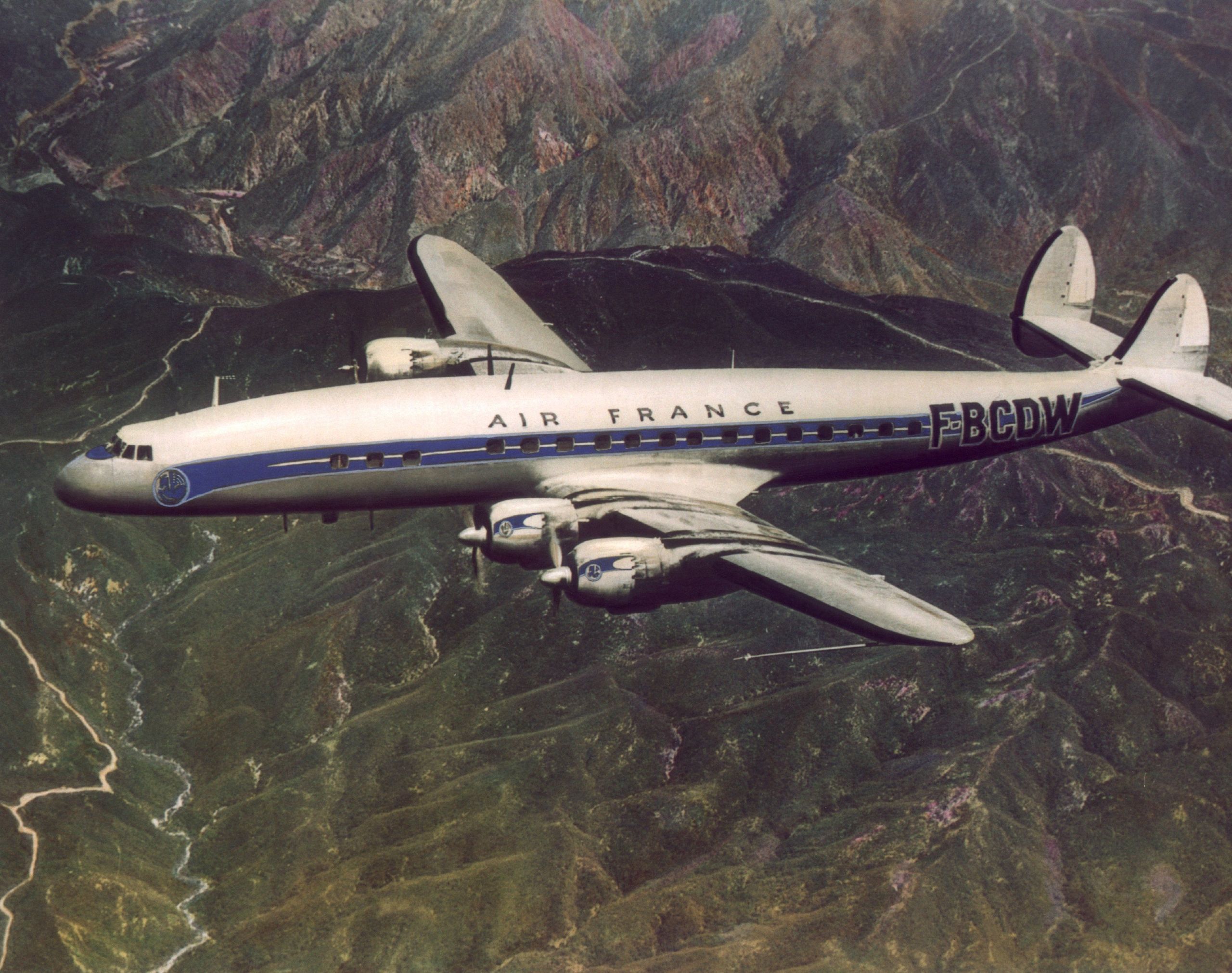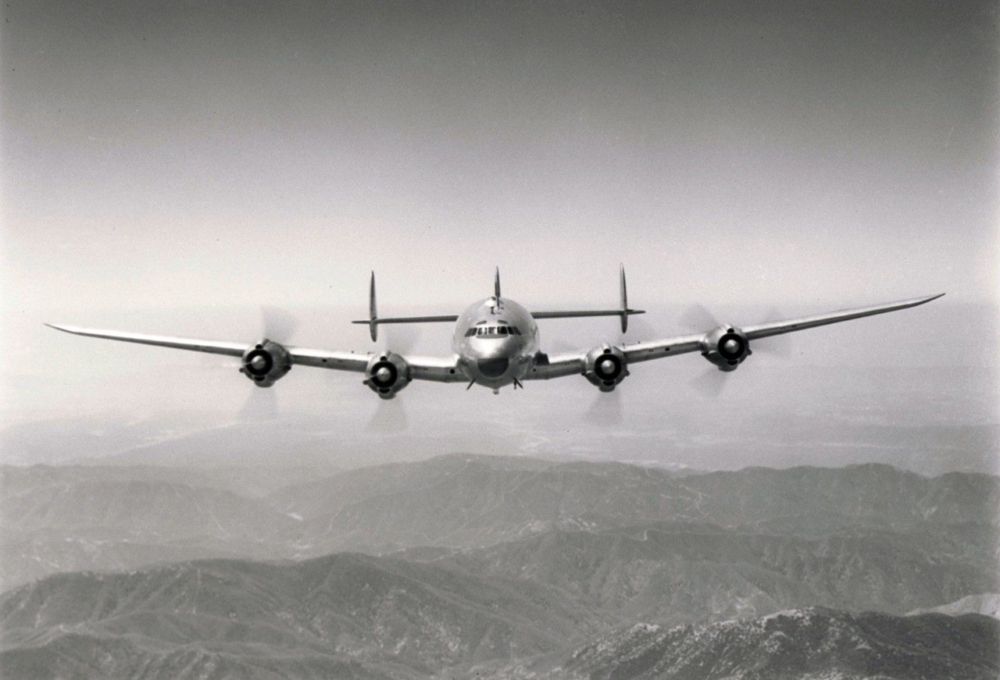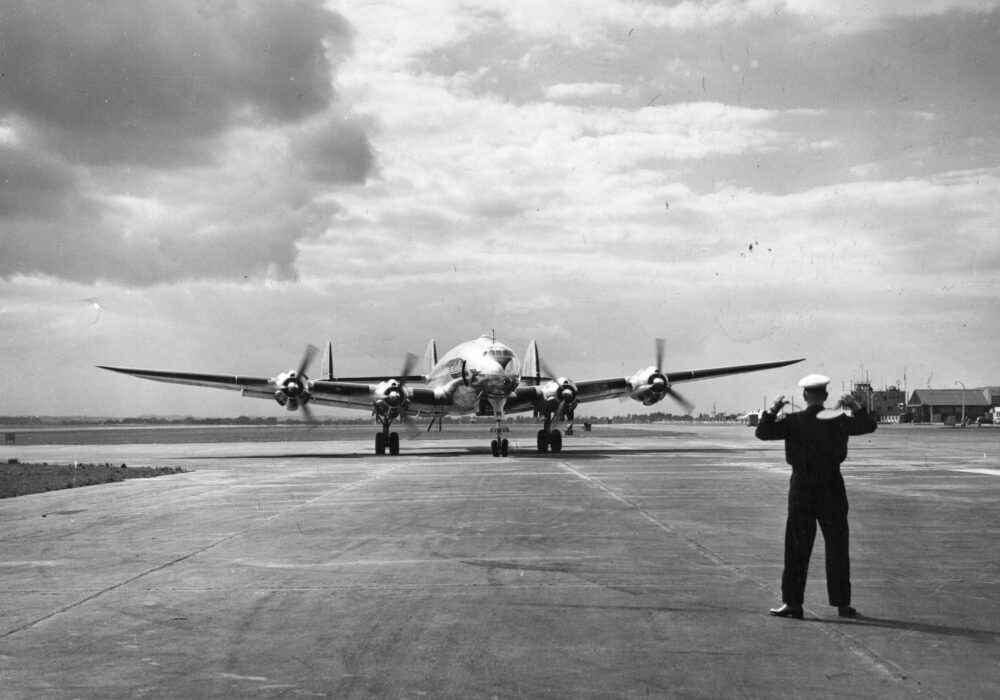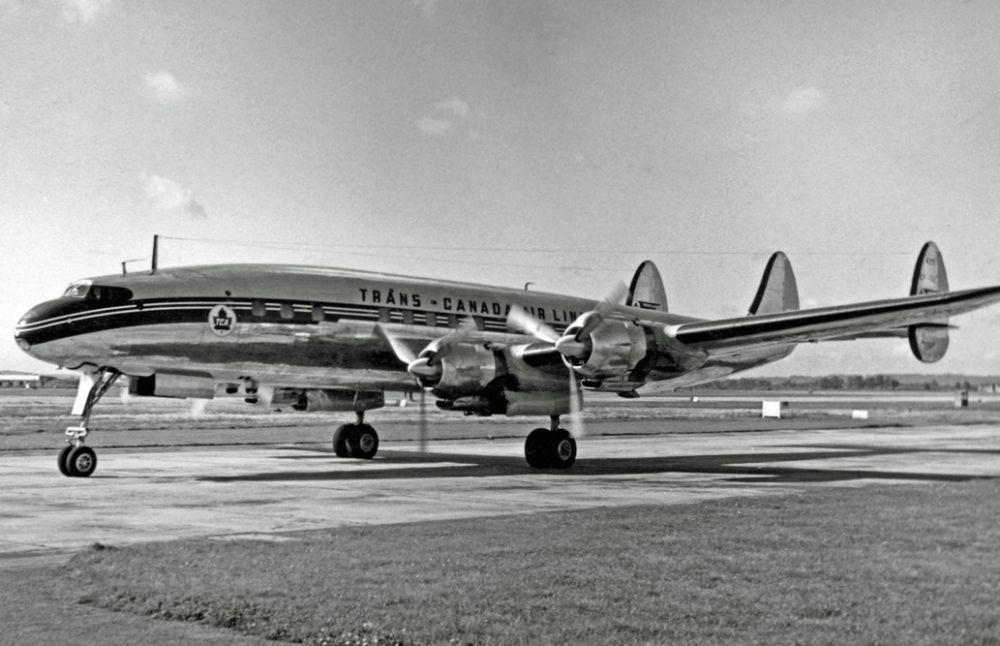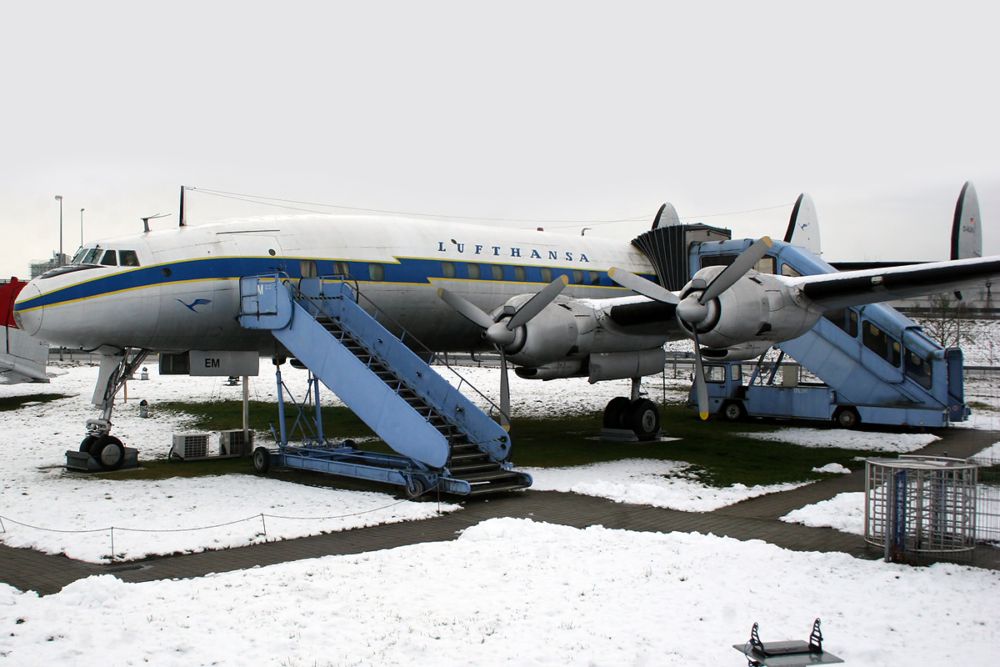Howard Hughes was everywhere during the most integral years of aviation and show business. The pilot, engineer, movie producer and businessman was influential in many fields, including the progression of aviation. One of the several factors that he would eventually inspire was the Lockheed L-1049 Super Constellation program.
The prior engagements
After purchasing a majority share of TWA in 1939, Hughes had a meeting with key Lockheed Corporation figures. Chief engineer Hall Hibbard, chief research engineer Kelly Johnson, and president Robert Gross listened to the aviator's requests. The two parties left the meeting with even greater ambitions than they entered with.
The rendezvous led to the formation of the Lockheed Constellation. Notably, Hughes was keen to grab a bigger slice of the market with this aircraft. As a result, he required outright secrecy with the program and asked Lockheed not to sell the plane to any other transcontinental carrier until his airline had 35 units delivered.
“Hughes outlined the initial performance specifications, but it was Lockheed that would design the sleek, distinctive, now-iconic aircraft. It was a critical turning point for Lockheed. As Hibbard said, “Up to that time we were sort of ‘small-time guys,’ but when we got to the Constellation we had to be ‘big time guys’ … We had to be right and we had to be good.” Being good meant introducing new features previously unseen on passenger planes,” Lockheed Martin shares.
“The Constellation would offer the first hydraulically boosted power controls, aviation’s equivalent of power steering. It would be faster than most World War II fighters at 350 mph. And, using award-winning technology pioneered by Lockheed a few years earlier, it would feature a pressurized cabin for 44 passengers that allowed the plane to fly faster and above 90 percent of weather disturbances, what Constellation regulars would come to call smooth sailing.”
Kicking off the deliveries
The Lockheed Constellation, nicknamed Connie, was introduced in 1943 with the USAAF, playing an important role in World War II. However, TWA became the first commercial operator just two years later. It was the first widespread airliner with pressurization in its cabin.
The propeller-driven, four-engine airliner was a revolution in the industry. Following its entry to service, passengers could fly well above poor weather for the first time in aviation history. Therefore, flight operations became safer and easier to coordinate.
Connie helped to achieve many groundbreaking feats. For instance, the type became the first commercial plane to fly above 12,500 ft (3,810 m). This aspect helped it conduct the first nonstop coast-to-coast commercial flight.
In the year that the type was introduced, Lockheed started looking at stretched versions. One such variant was the L-749, which would be extended by 18 ft (5.5 m).
The Super Constellation
At the turn of the 1950s, Lockheed repurchased the XC-69 Constellation prototype model from the Hughes Tool Company. The firm lengthened it by 18 ft (5.5 m) to form the structure for the L-1049 Super Constellation.
Connie Survivors shares that more than 550 design changes were made to the plane. It first flew on July 14th, 1951, before receiving a type certificate on November 29th, 1951. The first production aircraft held registration N6203C, and it was introduced with Eastern Airlines on December 17th, 1951.
Overall, 579 units of the type were produced between 1951 and 1958. Commercial airlines flew 259 planes while the military deployed 320, with the US Navy holding the most units.
Plenty to shout about
There were several advancements with the introduction of the Super Constellation. Reclining seats, air conditioning, and extra lavatories on board were some key additions. Lockheed Martin notes that it was at least twice as fuel-efficient as the preliminary jets that were around. The efficiency can even hold up against some aircraft introduced in recent times.
At least 18 variants of the L-1049 were designed or planned. 48 units of the L-1049C, the civilian version of the military L-1049B, were produced. A pilot, copilot, navigator, radio operator, and flight engineer made up the five-person crew. Meanwhile, between 47 to 106 passengers could fit in the cabin.
The L-1049C had a length of 113 ft 7 in (34.62 m), a wingspan of 123 ft (37 m), and a height of 24 ft 9 in (7.54 m). Four Wright R-3350 972-TC-18DA-1 Duplex-Cyclone helped it reach a maximum speed of 330 mph (530 km/h) and range of 4,480 NM (8,280 km / 5,150 mi).
There were other popular variants across the board. For instance, the first Lockheed L-1049G was delivered to Lufthansa in the airline’s first month of activity. The aircraft carried 77 passengers and could reach a cruise of up to 530 km/h (330 mph). The model conducted the flag carrier of Germany’s first intercontinental flight, a journey from Hamburg to New York via Düsseldorf and Shannon.
Stay informed: Sign up for our daily and weekly aviation news digests.
A new market
The success of the Boeing 707 and Douglas DC-8 led to the decline of the Super Constellation. The last US L-1049 flight was conducted by Eastern Airlines in February 1968. Following this, the final commercial L-1049 flight was in 1993. This was due to the FAA banning all carriers from the Dominican Republic that flew the type.
These carriers were the last to commercially operate the plane. In the forces, the last US military Super Constellation to fly was in June 1982. India was the last global military operator, retiring all its units by 1983.
Ultimately, the plane had pushed the boundaries while the aviation industry was still developing. It became expensive to operate the plane compared to jet alternatives that were emerging. The jet would go on to rule the transcontinental and wider long-range market in the second half of the 20th century.
What are your thoughts about the Lockheed L-1049 Super Constellation? What do you make of the plane’s operations over the years? Let us know what you think of the aircraft and its legacy in the comment section.

